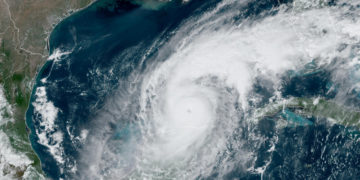Last year was a busy hurricane season with storm after storm racing across the Caribbean, bringing multiple storms ashore in Florida, ravaging rains to the Carolina mountains and strong winds to downtown Houston; another robust season is likely to occur in the Atlantic in 2025.
Phil Klotzbach, a researcher at Colorado State University, said that this year’s season was likely to be an above-average — but not hyperactive — one.
In his team’s annual forecast on Thursday, the researchers said they expected a hectic season of 17 named storms, including nine hurricanes — four of them potentially reaching major status, meaning Category 3 or higher. In a typical season, there are 14 named storms with seven hurricanes, three of them major.
“Things aren’t as primed as they were last year at this time,” Dr. Klotzbach said. “We’re still dealing with pesky heat in the subtropical eastern Atlantic and Caribbean. That combo historically has led to busy hurricane seasons.”
In April of last year, this same team forecast an extremely active season, and their forecast looked reasonably accurate. Storms took off early in the season with Beryl, which set a record for the earliest point in a season that a storm has ever reached a Category 5.
Then, at the peak of hurricane season, everything went quiet. There was a long lull, and questions over whether the forecast was a bust, but then the Atlantic ignited again, producing storms like Helene, which lashed Florida before bringing damaging flooding to the southern Appalachians, and Milton, which launched itself just south of Tampa, bringing terrifying tornadoes up and down the Florida peninsula.
Last year had so many destructive storms that the World Meteorological Organization, which is responsible for naming hurricanes, announced on Wednesday that it had retired the names of three Atlantic storms: Beryl, Helene and Milton. Names are on a six-year rotation, but are retired when a storm causes significant damage or noteworthy activity.
This year, Dr. Klotzbach’s team said, they expect an above-average probability of major hurricanes to make landfall along the continental United States coastline and in the Caribbean.
Dr. Klotzbach and his colleagues projected some probabilities that a major hurricane may affect the United States: about a 3 percent chance of one coming within 50 miles of New York and a 35 percent chance for Florida. This is slightly above the regular occurrence of 2 percent for New York and 29 percent for Florida in an average season.
This year, they believe, the steering current around a high-pressure system in the Atlantic may tend to be stronger. In a hurricane season without El Niño, like this one is likely to be, that would push storms farther to the west and create more favorable conditions for storms to form in the western half of the Atlantic basin. “We certainly saw that difference in 2023 compared to 2024,” Dr. Klotzbach said.
It’s reasonable to take this forecast with a grain of sea salt; the seasonal forecast in April hasn’t always been the most accurate.
Colorado State University’s April forecast for the 2023 hurricane season called for a slightly below-average season with 13 named storms. Instead, there were 20. But Dr. Klotzbach says the accuracy of the April forecast is improving.
Judson Jones is a meteorologist and reporter for The Times who forecasts and covers extreme weather. More about Judson Jones
The post Hurricane Experts Forecast Another Above-Average Atlantic Hurricane Season appeared first on New York Times.



















